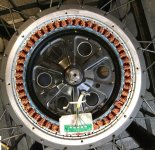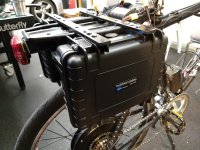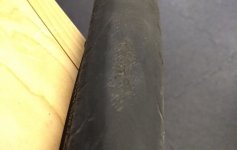wturber said:
Popped another 12 gauge spoke on the rear wheel on Tuesday. Rode with it all week and didn't break any others. Like all the previous spokes that broke, this one also broke at the curved elbow. Given the pattern, it seems likely I'll be breaking more. This may be inevitable due to the issue of using 12 gauge spokes (as Chalo warns against) or due to the use of lower quality spokes. As a reminder, this wheel has over 5600 miles on it. Three broken spokes doesn't seem horrible to me given the distance ridden on a hardtail.
Not horrible, but me on my trike weighs much more than you and your bike

especially when I'm carrying cargo, and I've not broken any of the radially-laced less-than-90mm 13/14butted Sapim spokes on the 20" rear wheels, despite potholes that have caved in the edge of a rim, and despite re-using the same spokes on replacement rims.
(same with CrazyBike2, which was probably a hundred pounds lighter).
Don't know how many potholes / bad road stretches you go over regularly; that makes a difference too.
But I did have that problem on various wheels using 12g spokes (albeit of unknown quality/manufacturer; OEM-wheel stuff) on various wheel sizes. Often enough the first thing that happens is actually the rim failing--cracking around the nipple holes, which then allows the spoke to untension, and then it flexes at teh elbow, which then breaks the spoke from fatigue.
If I were you I'd check the nipple holes in the rim very carefully in good sunlight, with magnification, to see if there is any cracking around the holes where spokes have already failed. My guess is that it is there whether visible or not. If there are eyelets you may not be able to see the cracking very well. The ones I've seen are always radially outward from teh hole, and sometiems the rim around the hole is actually "mounded up" toward the hub.
So...anyway, my experience has been not that thick spokes are bad, per-se, but that spokes that are too thick for the rim they're on break the rim and that allows the spokes to loosen and flex and break.
FWIW, almost every regular bicycle wheel that I've had spokes break on (especially repeatedly) has been one that was not tensioned properly (if at all) and the spokes also broke at the elbows.
The ones that broke elsewhere were generally on wheels damaged in impacts, like a "taco" event, or placed under severe stress / overloads in sideloading.





